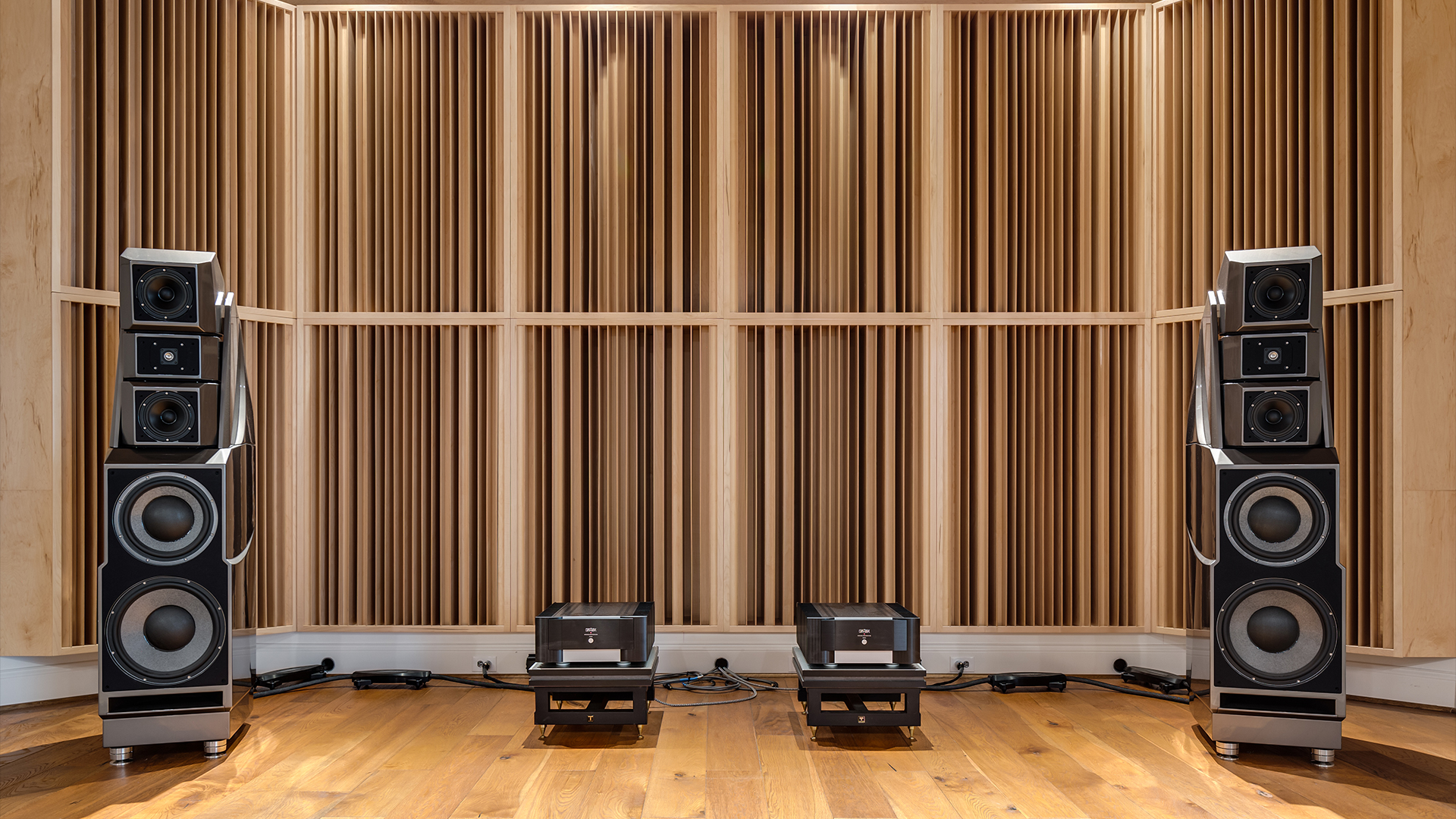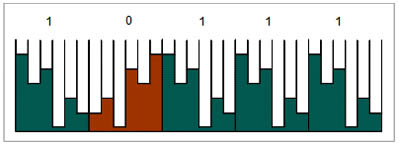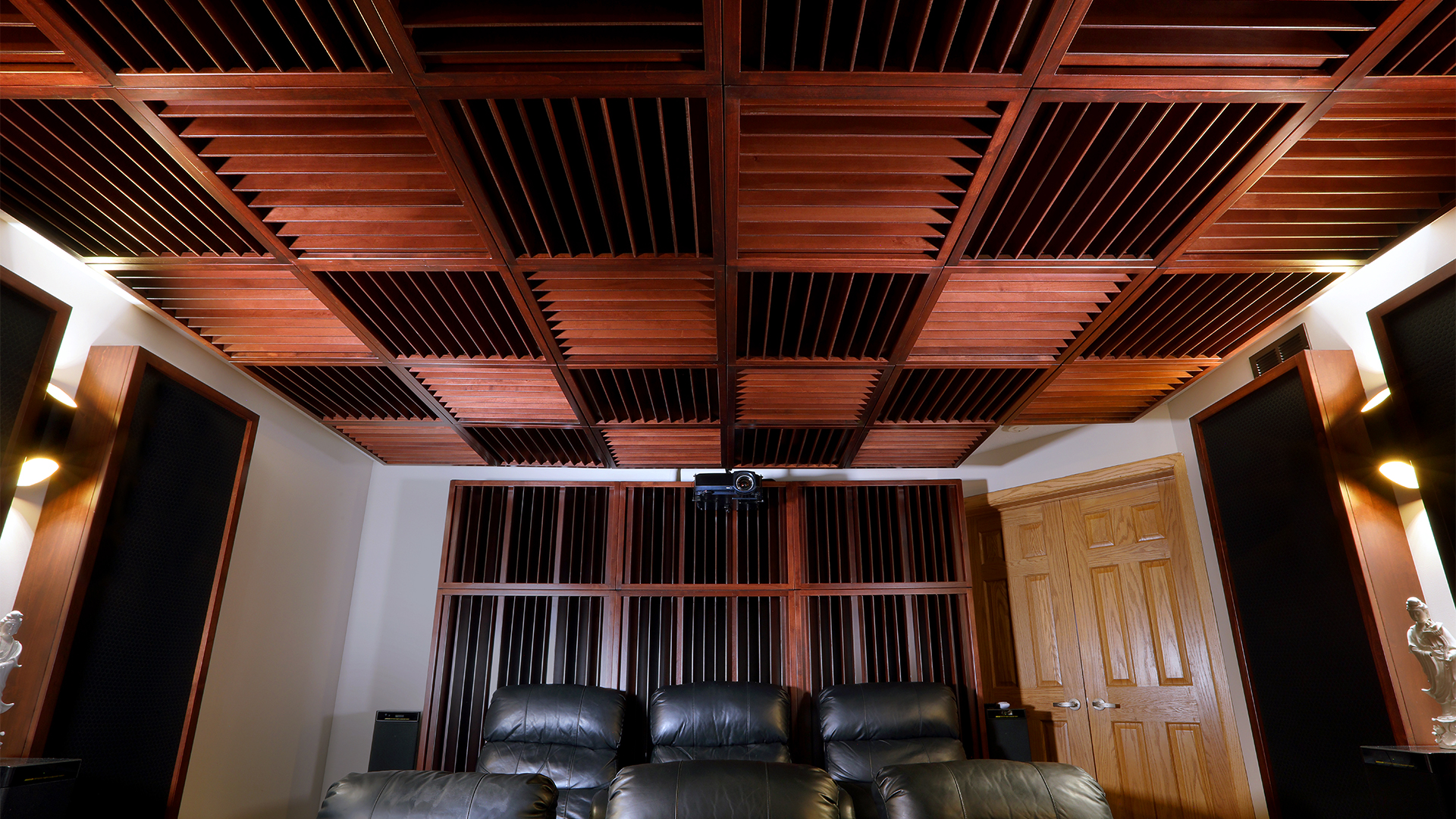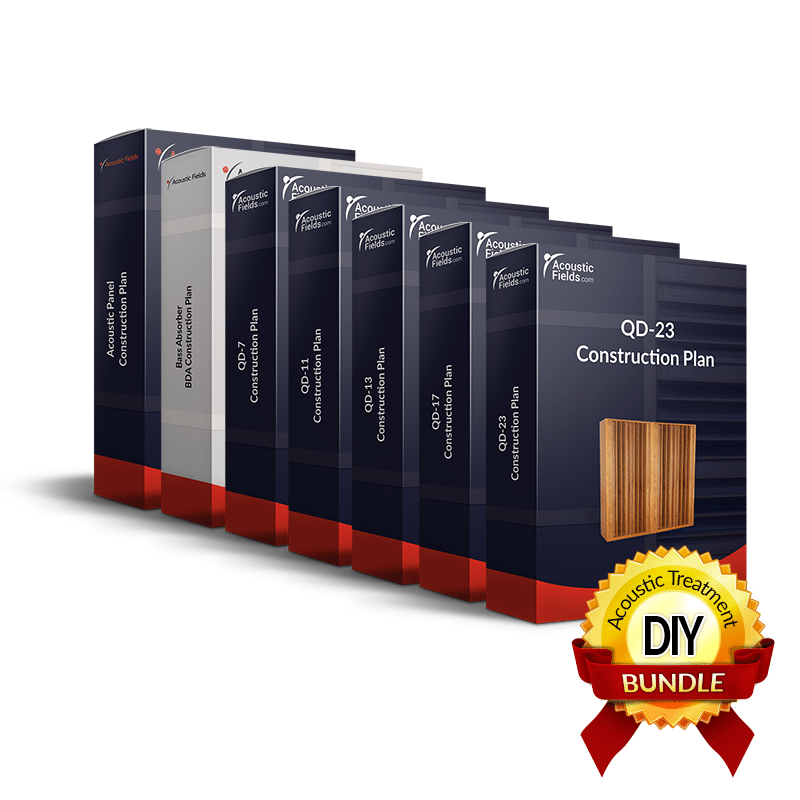What is a sound diffuser? it is a device to manage reflections and make our small rooms sound larger using psychoacoustics. They work in different sound fields by taking a “larger” reflection that strikes it and breaking that reflection into a series of smaller reflections. This process reduces the brain’s ability to localize larger amounts of energy as it reflects off of our wall surfaces by breaking the energy up into smaller octave bands. This process can be accomplished using many diffusers across the offending surface area. care must be taken in the material you use to build your DIY sound diffusers along with the type, amount to build for your usage and where to place them within your room. Every room usage is different in the treatment types you use. A control room has different requirements than a live room. A vocal room has different requirements than a live room. many variables must be considered and designed for.
Quadratic Diffusion Defined: https://en.wikipedia.org/wiki/Diffusion_(acoustics)
Quadratic diffusion is the only true type of diffusion. It is the only diffusion type that will meet the rigid criteria for a true diffused sound field. Among the criteria for a true diffused sound field is a smooth frequency room response with no spatial irregularities. Secondly, the diffused sound field must be throughout the whole room. Thirdly, the decay rates must be uniform and smooth using a logarithmic scale and exist throughout the whole room. Reverberation times must be the same throughout the room. The only true diffusion type that can meet these criteria is quadratic diffusion.
Quadratic Diffusers
Quadratic diffusers are a series of wells or troughs that have a certain depth and width. The width is calculated on a quarter wavelength rule and the width of each well is calculated on a half wavelength rule. Quadratic diffusers are based upon prime numbers. Prime numbers are 7,11,13, 17,19, 23. The higher the prime number the lower the frequency the diffuser diffuses at using the well or trough depth at quarter wavelength rules and the wider the frequency range the diffuser operates at. Let’s take a prime number 13 as our example. With the 13 we have well depths that are 1″, 4″ 9″, 3″, 12″, 10″,10″, 12″, 3″, 9″, 4″, 1″. If we take the deepest well which is 12″ and applies the quarter-wave rule, we take the 12″ x 4 for a 48″ wavelength. We then take 1130 which is the speed of sound and divide it by 48″, we achieve a frequency of 282 Hz. This is the low end of the diffuser’s performance. We then apply the same principle to the well or trough width using the half-wavelength rule. If our trough width is 2″ we end up with a top-end frequency of around 3,450 Hz. Taking both extremes together we now have a diffuser that diffuses energy from 280 Hz. – 3,450 Hz. The deeper the well depths the lower the frequency of resonance.
Two – Dimensional Diffusion
Quadratic diffusers can create one or two dimensions of diffusion. A vertically positioned diffuser will radiate energy in a horizontal array of energy that is 180 degrees. A horizontally positioned diffuser will spread the energy out in a vertical array that is 180 degrees. Combining both horizontal and vertical diffusion in a room creating two dimensions of diffusion. Determining what type of diffusion to use within your room is a function of usage and distance. Diffusers take distance to operate. They take distance for the lowest frequencies to fully form within the room. One dimensional diffusion can create a wider sound stage along with more detail and resolution. Two-dimensional diffusion can be used to minimize the impact of reflections from close boundary surfaces.
Two-Dimensional Ceiling Diffusion
Quadratic diffusion is an incredible acoustic technology. We now have it available in a DIY sound diffuser option that you can purchase. We have quadratic diffusion sequences based upon prime numbers 7, 11, 13, 17, 19, and 23. These are build drawings where you can build your DIY sound diffusers from our drawings. In order to build these diffusers from our plans, you must have a shop with a table saw and 3-5 years of woodworking experience. Large working tables are a must along with routing and joinery tools. All cuts are straight with right angles prevailing throughout the build of your DIY sound diffusers. Always stay with wood for your DIY sound diffusers. Wood, especially softer woods, produces a much smoother mid-range tone quality. You can stain your DIY sound diffusers but do not paint them. Do not use MDF in the build of your DIY sound diffusers. Stay with wood as your first choice for performance and appearance.
DIY sound diffusers: https://acousticfields.com/product/all-in-one-diy-acoustic-treatment-build-plans-package/
DIY Sound Diffuser Placement
Once you have decided to build your DIY sound diffusers you will need to decide which diffuser prime number to build and where to position them correctly. These calculations must be done before you start the process. Diffusion placement and type to use depends on the usage of the room you are placing them in and the distances we have to work within the room. Every prime number of diffusion requires a certain distance to operate effectively. Every room usage requires a choice between one dimension or two-dimension. We can assist you with that process. We have been using quadratic diffusion for over thirty years and no all about the type of diffusion to use, the amount of coverage required along with the proper positioning of your DIY sound diffusers.
Design Services
For those of you who wish for us to do the design for you and you build all the required acoustical tools, we can assist you with our design services. In our design services, we address both noise and treatment. Noise generated within the rooms and the transmission of it to the outside of the rooms is addressed along with outside noise coming into our rooms from outside sources such as traffic and those “elephants” of noise the garbage truck. Noise technology must be addressed first and foremost since noise will ruin any studio usage. No treatment types will have an impact on noise. You must measure the noise and build the required shell or barrier against each frequency of noise and its associated amplitude or strength. This is a complicated process with many steps that we can assist you with. With over 200 rooms built and measured, we know what works and more importantly what does not. We can do the design, you can build the barriers and the treatments.
Acoustic Fields Design Services: https://acousticfields.com/recording-studio-design-service/
About Us At Acoustic Fields: https://acousticfields.com/about/











The discussion on ductwork noise transmission from Acoustic Fields highlights crucial aspects of HVAC system acoustics. The movement of air…
Great build plans. thank you Denis
You must use absorption. Never place a chair against a wall.
A friend and I built several diffusors using these plans and they turned out absolutely beautiful. Very good instructions and…